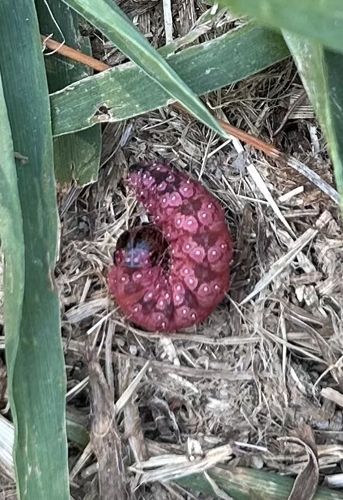Snailcase Bagworm / Casebearer Moth Larva
Scientific Name: Family Psychidae (specific genus and species difficult to determine from larva alone)
Order & Family: Lepidoptera, Psychidae (Bagworm Moths)
Size: Larvae of Psychidae vary in size but can range from a few millimeters to 2-3 cm in length when fully grown, though the visible part of this larva appears to be in the smaller range.

Natural Habitat
The larva is likely found in environments with vegetation, gardens, fields, or damp areas where decaying plant matter or algae is present. Given the appearance, it could be in an agricultural field or grassy area.
Diet & Feeding
The larvae of Snailcase Bagworms are primarily herbivorous, feeding on plant material. Their diet can vary depending on the specific species within the family, but they are often generalist feeders on various leaves, detritus, or algae found on surfaces.
Behavior Patterns
This specific Snailcase bagworm larva creates a distinctive case from sand, soil particles, or small bits of debris, which it carries around for protection. The larva stays inside this case, only protruding its head and thoracic legs to move and feed. When disturbed, it retracts completely into the case. As it grows, it enlarges or rebuilds its case. Pupation occurs within this case, with the adult moth eventually emerging.
Risks & Benefits
Generally, Snailcase Bagworm larvae are minor pests. While they can feed on plant material, they rarely cause significant damage to crops or ornamental plants in large numbers. They are not known to be harmful to humans or animals. Their primary ecological role is as decomposers or as a food source for other insects and birds. The case offers protection from predators and desiccation.
Identified on: 8/21/2025